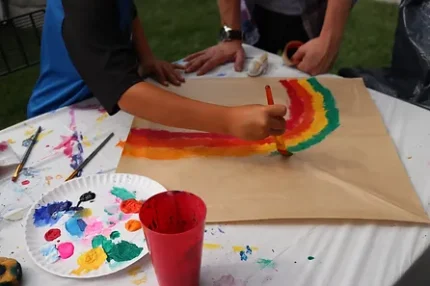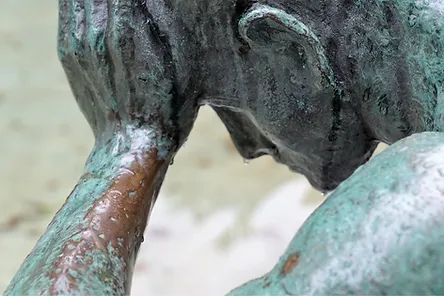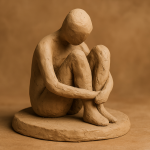Art therapy remains an underused and under-studied form of treatment for mental ailments, and most scientific work studying treatment for chronic diseases doesn’t focus on the psychological impact of these conditions. Many people aren’t even aware that it’s an option, or may lack education on the subject, and consider it to be unscientific. Raising awareness of alternative forms of therapy (such as art therapy) will expand its availability, and inspire more research into the area.
There is a lack of in-depth and large-scale research on:
- Effectiveness of art therapy in larger populations
- Types of therapy that are effective for which conditions
- Identifying who will benefit the most from these therapies
Better understanding of these factors would allow for programs targeted at specific groups to be better advertised, increasing their use and efficacy. Going to a workshop and trying to paint or play an instrument for the first time could provide the inspiration that sparks a new hobby. If a particular kind of art therapy is helpful for someone, it would be ideal to have them fall in love with it.
Groups like LOUD Art Society are so important because they provide these opportunities. Dancing, singing (solo and in choirs), playing music, origami, sculpting, painting, drawing, colouring, mixed media collage, collaborative group activities (such as murals), theatre, and acting have all been shown to be artistic mediums with therapeutic potential.
There is truly something for everybody!
How does art therapy work?
 Art therapy isn’t just a palliative solution; over time, it actually changes how the brain functions. Each part of the brain forms complex connections with many other parts and serves multiple purposes.
Art therapy isn’t just a palliative solution; over time, it actually changes how the brain functions. Each part of the brain forms complex connections with many other parts and serves multiple purposes.
Art therapy works because it holistically engages many brain areas at once, and this ‘exercise’ trains the activated parts to be more active in general; more oxygen and glucose flows to these areas, reinforcing existing connections and making new ones over time.
For example, when drawing or painting, areas of the brain in both hemispheres are stimulated, and this whole-brain stimulation facilitates cognitive restructuring and supports neural plasticity. This is the same basic principle that allows cognitive behavioural therapy to work. It has been proven that therapy involving sculpting, painting, and colouring has positive effects on mood and anxiety immediately afterward, as well as persistent positive effects at least 12 months later.
Social and communication faculties are shown to be improved by the use of art therapy, because art itself is ultimately an emotion-based form of communication: the artist’s feelings turn directly into brush strokes, ink lines, the clay under their fingers, etc. It’s important for the person doing the art to understand that what matters most is the creative process, as this is the therapeutic part; while the end product may be meaningful, it’s the exercise that’s important.
The art that’s created is for the artist. Additionally, mindfulness techniques can be employed during art therapy to enhance its impact and effectiveness. It may sound obvious, but it’s also important for people doing art therapy to enjoy the type of activity they’re engaged in. Not everyone will enjoy making certain kinds of art, and the more someone enjoys doing something, the more engaged they will be with it.
Why is art therapy important today?
The main brunt of the pandemic has passed us in Canada, but many factors such as social isolation, personal and financial hardships, and potentially loss have introduced complex, persistent traumas and stressors that are difficult to shake off. Introspection and self-expression are important techniques in overcoming these sorts of traumas, and art therapy is a great tool for going about this, especially when the participants actively reflect on the art-making process.
Art-based therapeutic intervention can help develop coping mechanisms and resilience in groups affected by a disaster, such as the pandemic. Additionally, creating art in a group setting produces heightened feelings of belonging and kinship. If someone attends art therapy sessions, their caregivers and supporters should be encouraged to attend with them whenever feasible; the former’s emotional improvement will have a positive effect on them either way, but a joint activity has been shown to strengthen emotional bonds and have a variety of positive effects.
References and Further Reading:
- Cucca, A., et al. (2018). Visuospatial exploration and art therapy intervention in patients with Parkinson’s disease.
- Edwards, C., & Hegerty, S. (2017). Where it’s cool to be kitty: An art therapy group for young people with mental health issues.
- Gavron, T., Ito, T., & Inoue, T. (2020). Art-based psychosocial interventions in Japan.
- Junakovic, A., & Telarovic, S. (2021). The effects of art therapy on Parkinson’s and Alzheimer’s disease.
- Khubetova, I., & Vorokhta, Y. (2021). Art therapy for Parkinson disease.
- Peterson, C. (2015). Walkabout: Looking in, looking out—A mindfulness-based art therapy program.
- Raglio, A. (2015). Music therapy interventions in Parkinson’s disease.
- Roseman-Halsband, J. L., et al. (2021). Art in clinical practice.
- Thaut, M. H., McIntosh, G. C., & Hoemberg, V. (2015). Neurobiological foundations of neurologic music therapy.
- Wu, C.-C., et al. (2022). Dance movement therapy for neurodegenerative diseases.



